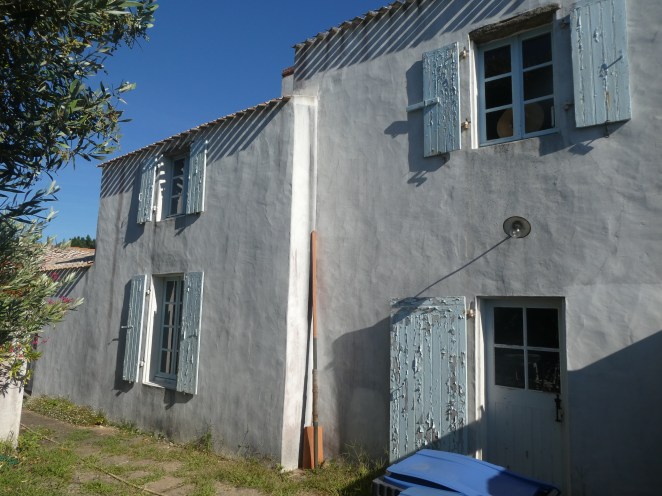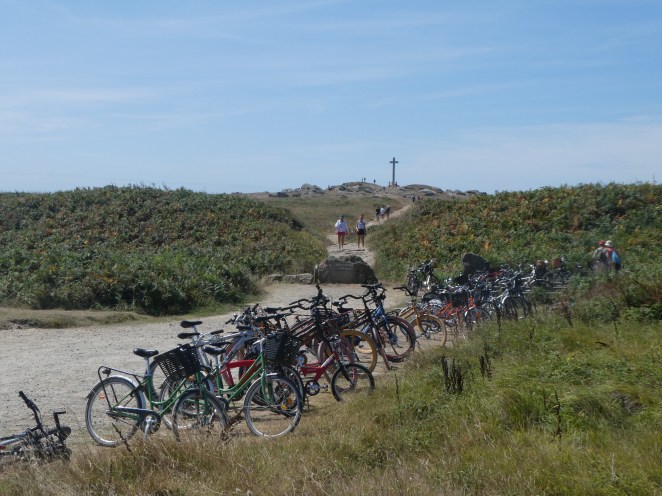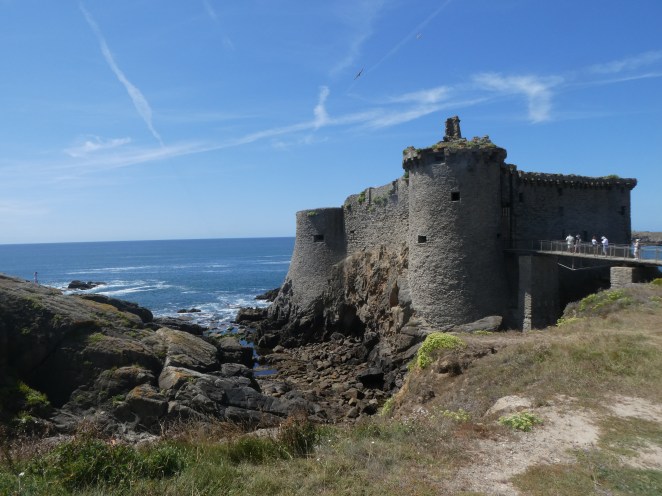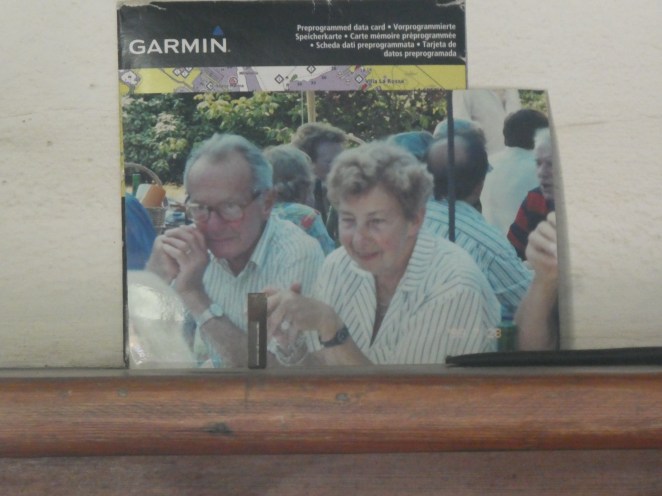
The secluded Ker Daniau beach on Ile d’Yeu is ideal for getting away from the crowds.
I want to sing the praises of the little known (outside of France) island of Ile d’Yeu, off the coast of Vendee. But before getting to the usual trip bumph, a visit there in late July, early August was a chance to reconnect with a family I stayed with on the island…almost 50 years ago!
To say that my sojourn with the family of Michel and Francoise Guillaud, first in Paris and then for a month on the Ile d’Yeu, in the summer of 1971, was a watershed for me would be barely doing it justice. Michel was an engineer, with a droll sense of humour, while Francoise was the smiling, welcoming, warm-hearted mother of three — Bertrand, Herve and Laurence — who made sure I felt like part of the family.
The point of the exercise, arranged by my mother Suzanne and inspired I think by a classified ad in the International Herald Tribune, was for me to learn French by living with a family that spoke nothing but. And that was true — it was speak French or starve, chez les Guillauds. Thanks to them, and my decision to stay on in France for more than a year afterwards, I learned enough French to later convince Reuters to send me to francophone West Africa — thus beginning my international reporting career.
And it was deep immersion on a small island where as far as I could tell, no one else spoke English, no one (except pere Michel) thought that slowing down their conversations was necessary, and no quarter was given for fusty non-French appetites. Hence meals of eel cooked in tomato sauce, dark, pungent boudin blood sausage with mashed potatoes, and on at least one occasion, I think, raw sardines (a speciality of the island).
Weather permitting (and it almost always did), these dejeuners traditionnels were served outdoors in the walled garden of the Guillauds’ summer house in the picturesque village of St. Sauveur, the oldest and second biggest town on the island. The rest of the day was devoted to bicycling, driving or walking to one or another of the splendid and varied beaches that ring the island from one end to the other. And in the evenings we occasionally went to the commercial centre Port Joinville to take in a movie (in French, naturellement), where one of the main attractions was the jeunes filles walking around at the intermission selling “esquimaux, glaces” from trays strung from their necks.

The Guillaud family house in St. Sauveur — looking abandoned but actually being restored.
A half century is a long time but imagine my disappointment when this summer I managed to find the house in St. Sauveur — and found it vacant and looking abandoned (see pics)! I knew from the Internet that Mme Guillaud had died in 2001, and Michel in 2014, but that a family as close knit, outgoing and friendly as the Guillauds should have let this house that was the centre of so many summers decline into disuse shocked me.
That, however, turned out to be a false assumption that was set to rights when, on a second attempt to find out what had become of the Guillauds, I ran into the local font of all knowledge, Mme Monique Cadou. She confirmed that M et Mme were indeed dead, but that when the summer house was put up for sale as part of the estate, Herve, who had worked as an orthodentist in Aix-en-Provence, decided to buy it. What I thought was abandonment was just the calm before the storm of renewal.
Mme Cadou was even so kind as to call up Herve and pass the phone to me, so that in a mix of English and French, he recalled who I was (“you were the one who left a winter jacket at our house in Paris”) and I was able to get an update on him and his siblings. On that score there was good news — Laurence and her husband have three grown children, all doing well, while Herve and his wife have a daughter and a son, fraternal twins, also going places. The discordant note was that Bertrand, who was a physician in the suburbs of Paris, died at the age of 68.
It is good to know, though, that the Guillaud house, so full of life in my memories, will soon be the scene of more of the happy familial gatherings that made that summer for me so special.
And what is this little island 27 km out in the Atlantic like, in the larger sense?
Dolmens and burial mounds attest to ancient settlement while in the 6th or 7th century AD Irish monks made their way down from Bangor, County Down and founded a monastery. Three centuries later Vikings arrived and destroyed it.
The island became know for its sardine and tuna fishing, and for the medicinal and industrial properties of seaweeds which islanders would bake in brick ovens near the beaches and ship to the mainland.
During World War One, German U-boats torpedoed shipping off the coast. And after World War Two, the collaborationist leader of Vichy France, Marechal Philippe Petain, was imprisoned in Ile d’Yeu’s citadel and is buried nearby. A local historical museum is almost a Petainist shrine, but a worker at the tourist office said, “People from here are not too proud of it.”

The privately run historical museum is almost a shrine to Vichy leader Petain.
To the year-round population of under 5,000 people, who mostly earn a living from fishing and tourism, add the thousands more who flock to the island in late July and August, the sacred holiday month for the French.
People are drawn to the 23-square-km (9-square-mile) island for the dozens of beaches along the coastline, each with its own character. Some are intimate, secluded sandy patches at the foot of paths leading down from steep rocky outcroppings and cliffs. Others are flat sandy spaces that serve for swimmers and boaters alike. Still others are bordered by pine forests that afford welcome respite from the summer sun.
“There is always something different, I never do the same painting twice,” said Henri Rouberol, an artist in his 70s (or perhaps older), who has painted on the island for years and displays his wares in a gallery on a back street of the main town, Port Joinville.
If bicycles seem a fixture of Rouberol’s work it’s because the island is swarming with them. The fast ferries that make the trip from the mainland to Ile d’Yeu in about 45 minutes carry passengers and their baggage, but not cars, trucks or even bicycles. Islanders and summer residents with houses bring over cars, bicycles and other goods on cargo ferries, while pretty much everyone else rents bikes at very reasonable rates (about 27-30 euros for three days) from a dozen or so bike rental outfits in Port Joinville.

Bicycles are the preferred means of transportation
Traffic on the island is a parade of bicycles, interspersed with the occasional car or truck — many of the cars vintage ones like the venerable Citroen 2CV, or ancient Peugeots and Renaults which look like they might not pass inspection on the mainland but seem perfectly safe rolling at 25 kph on Ile d’Yeu. Public electric buses also make the circuit.
There is lots of lovely countryside to explore, none of it very hilly, most of it with spectacular ocean views. It takes about two to three hours to circumnavigate about half the island at a leisurely pace, stopping to take in the sights, admire one of the dolmens, or to chat with other groups who are taking more or less the same route. A cycling cluster of what seemed to be several French families spent a good 10 minutes examining maps and querying one another to come up with the answer for strangers who’d asked what the name was of a beautiful beach at the bottom of a cliff. It was Ker Daniau, on the west coast, very near the 14th-century Vieux Chateau, a picturesque ruin that dominates the coastline.

The Vieux Chateau dominates the coastline on the west side of the Ile d’Yeu
Since this is France — and in many ways haute bourgeois France at that — attention is paid to fine dining and all it entails. Two French supermarket chains have outposts in Port Joinville, providing the full range of fresh produce, meats, poultry, a cornucopia of cheese and dairy, and fresh baked goods — though there curiously were no cherries at the height of cherry season. On top of that there are charcuteries, boucheries, boulangeries and several poissoneries in which the array of fish is breathtaking. Tuna (thon blanc germon) is still fished off the island, and turns up on menus in several forms, frequently as carpaccio.
That the mid-day meal remains sacrosanct here is attested by the crush of bicycles locked up beside the beaches until noontime, 90 percent of which are gone by 1230, when everyone pedals home for le dejeuner.

Making glorious crepes at Snack Creperie Martin in Port Joinville
Those who have no cooking facilities, or haven’t had the luck to be invited, are well served by the local restaurants and eateries. The venerable Guide Michelin recommends the well-appointed and comfortable Les Bafouettes in Port Joinville. A meal for two consisting of oysters and salad with foie gras for starters, and clams in garlic sauce and filet of duck for mains, was pleasing to the palate. But even better, for less than half the money, was a meal of tiny, native “patagos” clams in a garlic sauce, and mussels marinieres, washed down with Breton cider and followed by two exquisite sugar, butter and lemon-juice crepes at Snack Creperie Martin — at a table on the pedestrianised street.
It only takes a day or two to begin to feel like Ile d’Yeu is a special place, and the savvy marketing people are on to it. Sportswear tops and jerseys on sale at the open-air market in St. Sauveur, the oldest town on the island, and shops and boutiques elsewhere often are emblazoned with a logo: “Ile d’Yeu Way of Life” (the latter in English). It’s in the same spirit as the “MVI” bumper stickers for Martha’s Vineyard Island off Cape Cod, or dozens if not hundreds of holiday spots around the globe.

Market goers have their pick of trendy fashions or local cheeses, fish and other foods at the outdoor market in St. Sauveur.
But Ile d’Yeu has something special going for it. All of the beaches, all the way around the island, are open to anybody who can get there, by bike, dune buggy, foot, scooter or even helicopter (there is a helicopter, as well as an airplane, link to the mainland). The egalite part of France’s national motto is something to be cherished — as are the memories of times spent here.

Michel et Francoise Guillaud — photo a l’interieur de leur ancien maison.
— By Michael Roddy
INCROYABLE ! MERCI à vous Michael, mais quel travail…c’est à la fois beau et émouvant.
Mais non, la maison n’est pas à l’abandon, elle manque évidemment d’un bon ravalement général!
J’espère bien faire votre connaissance l’année prochaine.
Bien cordialement.
Marianne Guillaud,( la femme d’Hervé)
LikeLike